![]()
|
Shorter and Son (Ltd) |
Location and period of operation:
|
Shorter
and Son Ltd |
Stoke |
1906 |
|
* 1944-74 operated as a division of Fielding's Crown Devon Ltd. |
Earthenware and Majolica manufacturer at Copeland Street, Stoke, Stoke-on-Trent |
|
Previously: Shorter & Boulton
Subsequently: taken over by S. Fielding & Co
- more information on the three factories
owned by the Shorter family -
|
Shorter and Clarice Cliff "The pottery firm which later became Shorter and Son was first set up by Arthur Shorter in 1878 with a partner James Boulton in Stoke on Trent. Their products were solidly in the main-stream of Victorian taste - majolica wares of all types: jugs, bowls, flower pots and tableware, predominated. In 1891 Arthur’s brother-in-law
A. J. Wilkinson died in an accident. Arthur Shorter was asked to manage the pottery Wilkinson had established in Burslem in 1885. A few years later he bought the firm and in 1898 Arthur’s son Colley joined him. His younger son Guy, who became manager at Shorter's in 1900, joined his father and Colley at Wilkinson's in 1905. The two factories worked in close co-operation, advertising and exhibiting jointly. |
|
Pre-1920 Shorter ware was typical Edwardian majolica ware, jardinieres, plant stands, umbrella holders, bulb bowls, jugs, vases, etc and undistinguished domestic earthenware, novelty lines and ornamental earthenware. From the 1920s onward, Shorter & Sons specialized in the manufacture of ornamental and novelty earthenware. To quote an article in the Pottery Gazette (March 1941):
The novelties included Toby Jugs, tobacco jars, ash trays, sugars, creams, cruets, butter dishes, posy holders , and a host of other household items and many of these, especially the Toby Jugs, were still in production in the 1960s.
|
 basket |
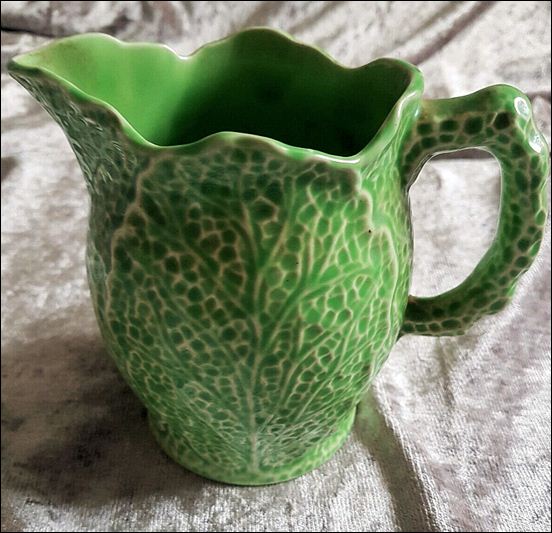 cabbage leaf jug |
Bookends
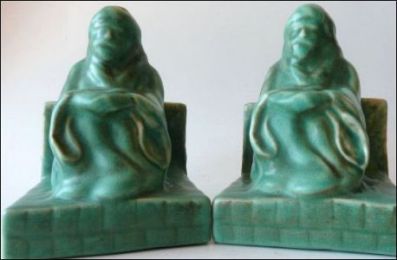 pair of seated Arabs |
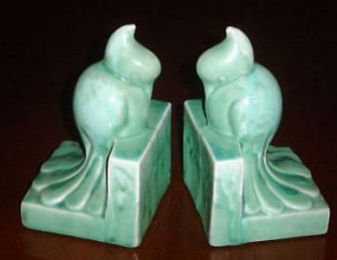 "L'oiseau" - the bird |
 pair of seated monks |
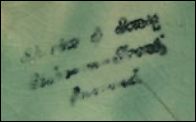
Shorter & Son
Stoke=on=Trent
England
mark of the 1920s
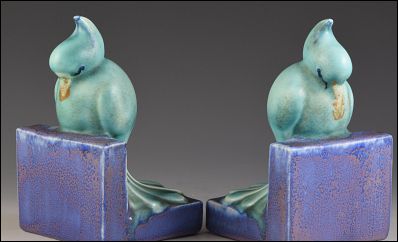
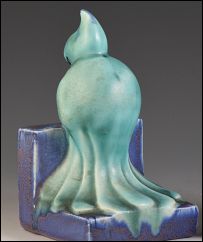 L'oiseau is French for 'the bird' - the green version was produced by Shorter & Son and introduced in the 1920s - this coloured glaze version was produced at the associated Newport Pottery photo acknowledgement: Andrew Muir |
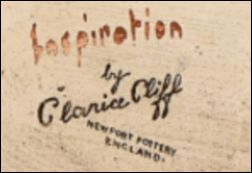
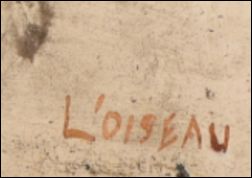 Inspiration by Clarice Cliff Newport Pottery England L'oiseau the Clarice Cliff mark was introduced around 1938 |
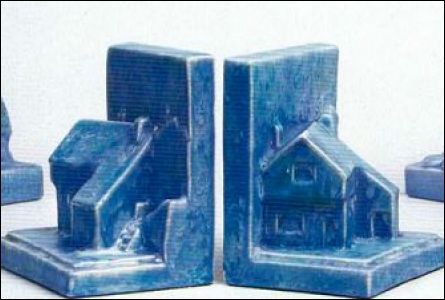 |
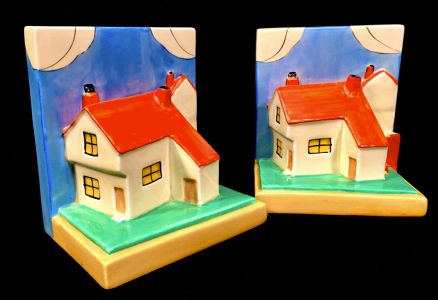 |
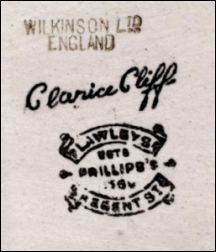 |
|
blue glaze cottage bookends produced by Shorter & Son c. 1920s |
same cottage bookends in vibrant colours, typical of the later Clarice Cliff style This
decorated version style produced at the associated Wilkinson Ltd One of the bookends is marked with the Lawleys/Phillips retail mark - the other is just marked Wilkinson photo acknowledgement: Antiques Boutique |
|
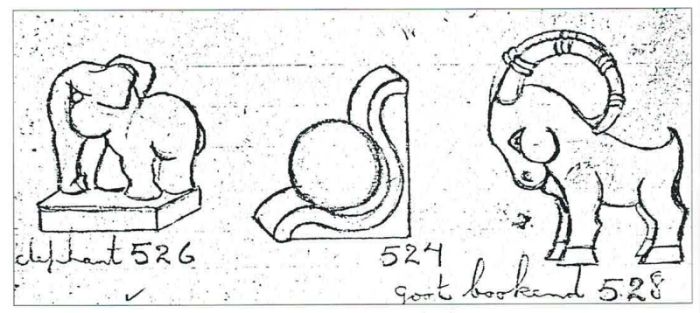
Elephant 526
| 524 | Goat bookend 528
Bookends. Illustration from mould maker's notebook
‘The Shorter Connection’ p 84
 pair of elephant bookends in green glaze |
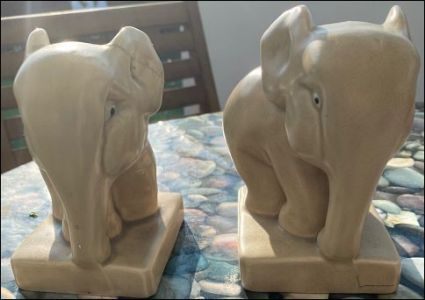 example of the elephant bookends, number 526, as shown in the mould maker's notebook above |
Shorter
England 526 |
|
photos courtesy: Susan Sword |
||

Neptune toby jug
this example produced by Shorter
& Son pre 1963
Toby Jug ware continued to be made when the
company became a subsidiary of Crown Devon in 1963
after 1963 ware was marked with both Shorter & Crown Devon
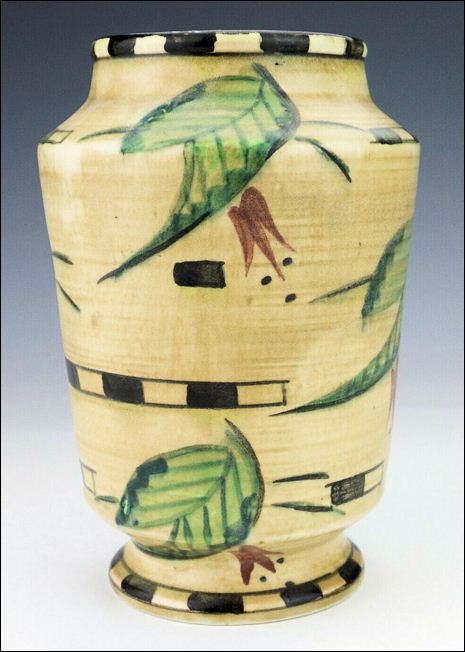
Vase in the Kashan pattern
designed
by Mabel Leigh in the early 1930s
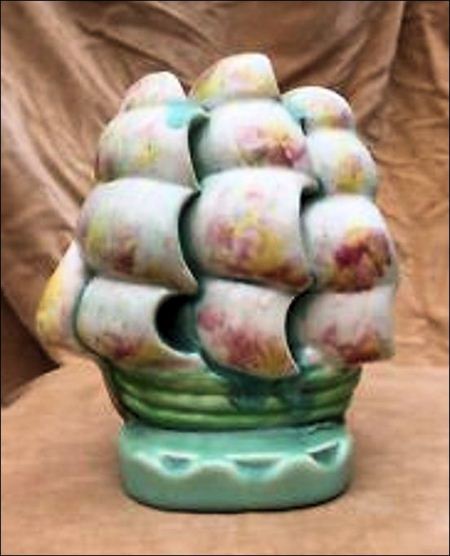
Galleon
Sunray Pottery
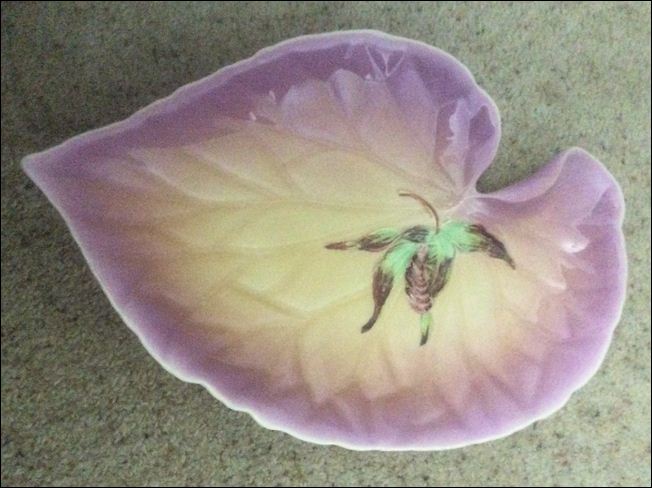
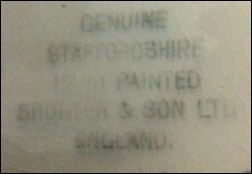
Serving/trinket dish from the Galaxy range
| "Galaxy, marketed in
1960, consists of asymmetric shapes based on a wavy-edged leaf design.
There is a great variety in the size and overall shape of each piece. A
single colourful embossed flower decorates the pastel background which
is shaded in two colour combinations fo mauve, green and peach."
The Shorter Connection - Irene and Gordon Hopwood |
Forties Matt Glazed Ware
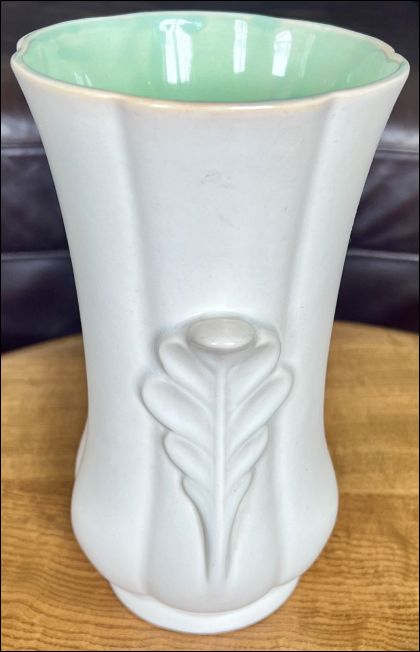 Matt glazed vase in design number 649 White matt glaze exterior with the inside a pastel shade of turquoise green. The moulded supports are of stylised acanthus leaves. photos courtesy: Deborah Champion
|
cast-in pattern number 649 S/S NOTE: The S/S indicates small size, as apposed to large size, - a number of designs were produced in S/S and L/S alternatives.
Forties Matt Glazed Ware "One of the most significant Shorter designs of the 1940s appeared at the end of the decade when a series of of elegantly styled vases in matt glazes, numbered from 645 to 650 was created. The simplicity of each piece is enhanced by the modelling which forms and integral part of the design. The shapes are gently moulded and curved to form either vertical or horizontal bands, the shadows thus formed providing a subtle decorative effect. Each of the five (sic) vases bears a a pair of moulded handles or decorative supports in and abstract leaf design. A matching bowl, number 651, together with wall pockets, shape numbers 668 and 672, complete the range. Matt
glazes in pastel shades including turquoise green, soft yellows and browns
were most widely used. At a later date, a series of the vases in a white
matt glaze with a pink exterior, proved to be and effective alternative to
a set issued in deep ruby red." The Shorter Connection - Irene and Gordon Hopwood |
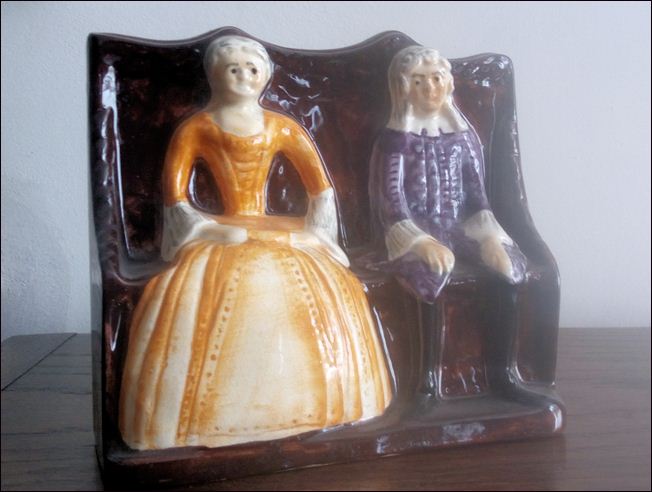 figurines in the style of what is known as a “Pew Group” Probably produced in the 1930-50 period.
|
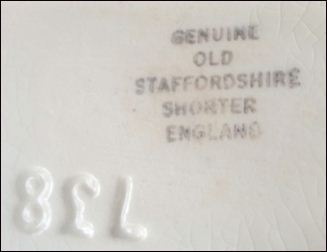 Genuine Old Staffordshire Shorter England cast in number 738
|
photos courtesy: Bruce Hamilton
 Serving dish & spoon in the daffodil pattern
|
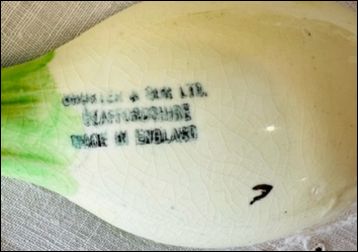 Shorter & Son Ltd Staffordshire Made in England
|
photos courtesy: Julie Beutler
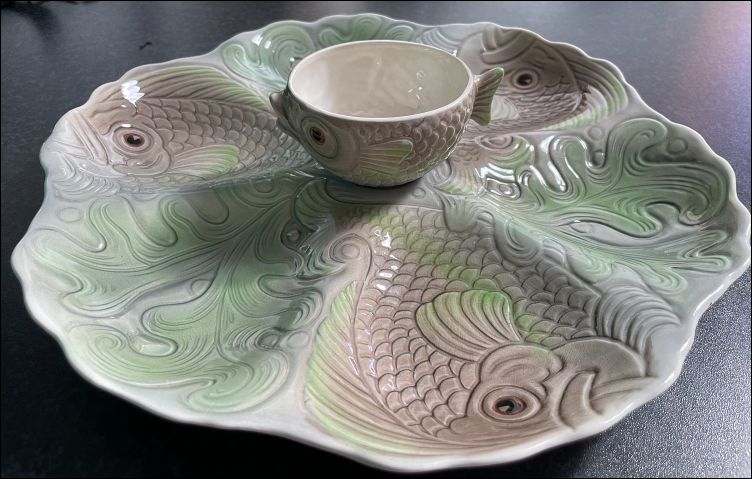 Fish tableware 'a wavy-edged hors d'oeuvre dish with a fish-shaped sauce bowl' c.1950s photos courtesy: Janine Soetens |
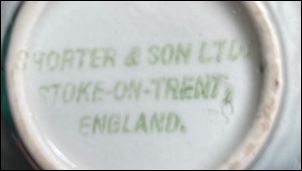 Shorter & Son Ltd Stoke-on-Trent England |
The Shorter Connection - Irene and Gordon Hopwood |
Marks used on ware for identification:
Shorter & Son Ltd trade names
include ’Batavia Ware’ and ‘Sunray Pottery’.
Most of the Shorter marks are utilitarian - virtually all ware was marked
with
a printed ‘Shorter & Son Ltd, Stoke-on-Trent, England’ or similar
wording.
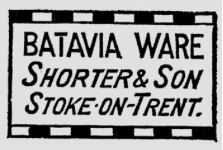
Batavia Ware
Shorter & Son
Stoke-on-Trent
c. 1914-36
the original
company of
Shorter,
Bettelley, Millward & Co
was recorded as being at the
Batavia Works
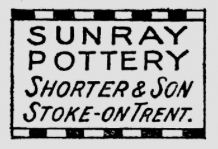
Sunray Pottery
Shorter & Son
Stoke-on-Trent
c. 1936-40
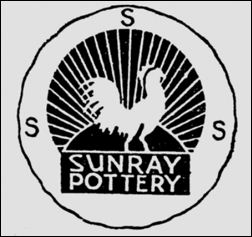
Sunray Pottery
c. 1940+

Handpainted by
Shorter & Son
Staffordshire England
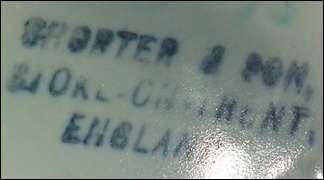
Shorter & Son
Stoke-on-Trent
England
c. 1905 - 33

Genuine Staffordshire
Handpainted
Shorter & Son Ltd
England
marks with 'Ltd' are dated 1933+
Shorter / Crown Devon
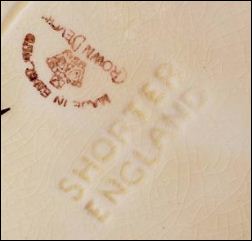
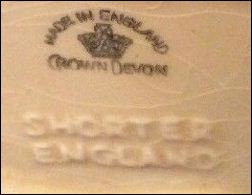
Made in England
Crown Devon
Shorter
England
1963+
Toby Jugs continued to be
made when the
company became a subsidiary of Crown Devon in 1963
after 1963 ware was marked with both Shorter & Crown Devon
Shorter / Sherwood
|
As well as Crown Devon continued production of the Shorter Fish Ware and some of their character/Toby jugs. Another manufacturer - Sherwood China also purchased some of Shorter & Son moulds. A number of Gilbert & Sullivan figurines were produced during the mid to late 1980s. Because these were made in china and not earthenware the figures are slightly smaller than the original.
Sherwood
adopted the style of their mark (a double circle enclosing and oak tree)
|
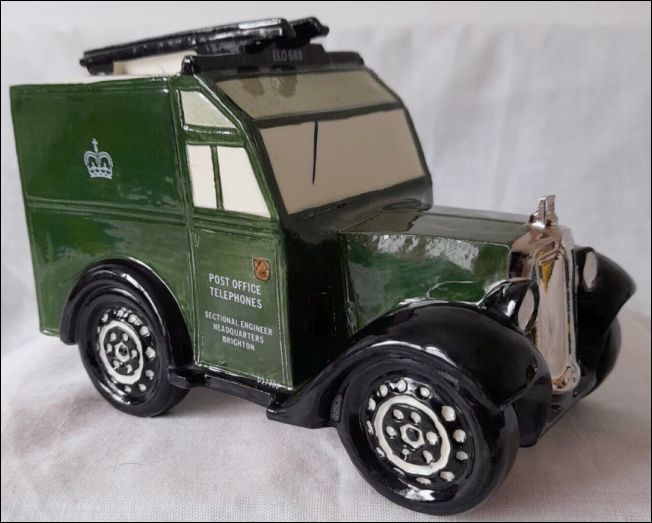 Post Office Telephones Sectional Engineer Headquarters Brighton produced by Sherwood China in the mid to late 1980s |
 1938 Morris 8 Overhead Lineman's Van
|

Shorter & Son works,
Copeland Street, Stoke-on-Trent
May 1963
Photographer: Bert Bentley
Image courtesy of Stoke-on-Trent Ciry Archives
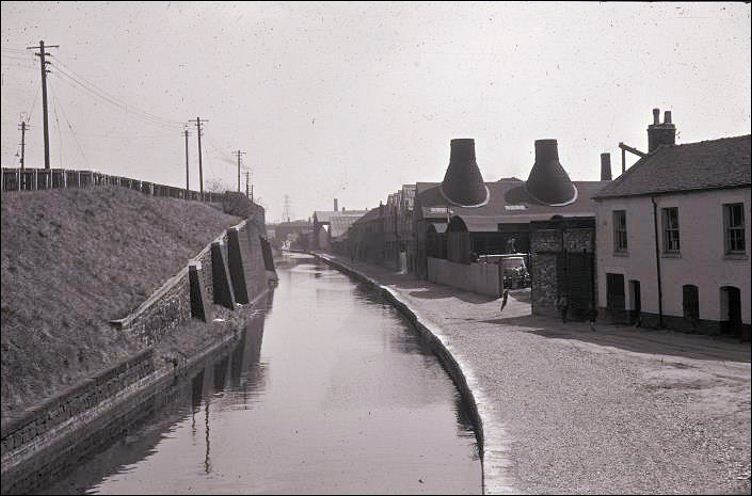
bottle kilns to the rear of
Shorter & Son works
March 1965
| The photograph shows the wharf on the Trent & Mersey Canal at Wharf Street in Stoke. To the left is a railway embankment.
The buildings to the right face onto Copeland Street and the bottle ovens belong to Shorter & Son Pottery.
|
- more information on the three factories
owned by the Shorter family -
Questions, comments, contributions? email: Steve Birks